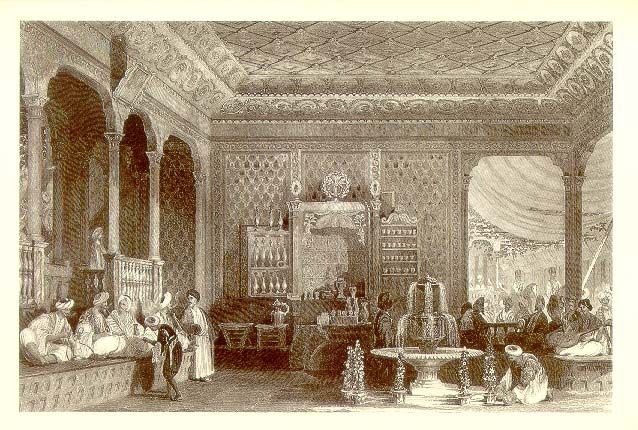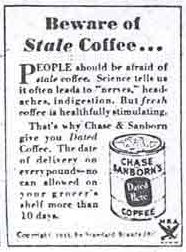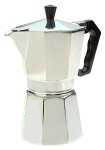|
|
 subscribe
subscribe
|
 subscribe subscribe
|
coffee
There are many, many kinds of coffee I enjoy while in cafés locally and travelling around the world. Here I share the various techniques we use to enjoy the brew of the bean. We raise a cup to you!

|
The first home-brew method is pretty easy, especially if you follow the two-phase preparation method. Phase one happens in the evening, after the children have gone to bed, and all the world is calm.
I pull my trusty Melitta 4-cup coffee maker to the edge of the counter, so the steam doesn't bother the kitchen cabinets. I open up the pie safe (what did you expect in a cottage built in the 1890s?) and dig around until I find the box of brown ubleached paper filters, which I drop into the coffee maker's cone.
 Open the refrigerator again and take a pint of half-and-half (cream and milk mixture), pour a bit of the white, add a cup of the brown, taste, close eyes and enjoy. |
Variously known as Qahwah Saadah (Bedouin coffee), Arab qahwah, Qahwa Arabeya (Arabian coffee), Kahwe bala Hal (coffee with cardamom), and Turkish (or Greek, or Macedonian, or Israeli) khavè, this brew comes to us through the mists of time. It's flavored with cardamom - sometimes called Grains of Paradise - and optionally with sugar. (UPDATE: I've had a Moroccan variant, flavored with cinnamon instead of cardomom. Also wonderful.) One doesn't need an ibrik (Greek; the Arabs call it a cezve) in which to cook the coffee, but it does make things easier. Copper or stainless steel, plain or fancy, ancient or modern. Or an old, small pot. Your choice.
 Making Turkish coffee (as it's known best over here) is really easy. It's best drunk from a demitasse; any tiny cup will do (cheap and plentiful at thrift shops and import stores). Figure out how many demitasse can be filled from an three-quarters-full ibrik. That number, let's call it n, is important. Write it down. You'll need it from day to day until you've got everything figured out and seasoned to taste. Fill the ibrik with n demitasse of water, n teaspoons of the coffee-cardamom mixture, and n teaspoons of white sugar. Bring this mixture to a boil, taking it quickly from the flame before the frothy head cascades out of the ibrik onto your stovetop. Bring back to a boil two more times. Remove the ibrik; allow the coffee to settle for a few seconds and pour immediately. Be gentle: don't allow the "the cream of the coffee" (as the liquid is called) to stir up the grounds on the bottom of the ibrik. Sucking the demitasse with your mouth a bit open will mix a bit of too-hot coffee with cool room air, making for a strong, sweet, and arousing sip of hot pleasure. Enjoy! |
We own a Ranchillo espresso machine, but it's too tall for our kitchen and too much trouble to use in my office. So mostly it gathers dust. When I want to brew the torrefacto coffee we've brought back from the Canary Islands I pull out the Junior Express stovetop espresso pot.
 The macchinetta, as it's properly known, works by heating water to create pressure which forces the water through the coffee grounds. The result is much closer to espresso than drip coffee. Here's how I do a brew:

|
| Have you found errors nontrivial or marginal, factual, analytical and illogical, arithmetical, temporal, or even typographical? Please let me know; drop me email. Thanks! |